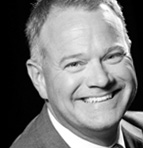In this latest edition of Rusell Investment’s Market Week in Review, Chief Investment Strategist Erik Ristuben and Consulting Director Sophie Antal Gilbert discussed the impact of U.S. midterm elections on markets, key takeaways from the U.S. Federal Reserve (the Fed)s recent policy meeting and October manufacturing activity levels from around the globe.
Gridlock looms in U.S. Congress after midterms. Will markets care?
Midterm elections in the U.S. concluded Nov. 6 with the Democratic party winning back the House of Representatives, while the Republican party kept control of the Senate.The reaction in markets was positive, largely because the outcome was in line with consensus expectations, Ristuben said. In addition, a divided Congress will likely equate to gridlock-another positive for markets.

Why? Gridlock provides certainty, and certainty is what the market cares about, he explained. In this case, theres now an increased level ofpolitical certainty-an expectation that Congress probably wont get much done in the next two years-and this will likely allow investors to focus more on the fundamentals behind the U.S. economy as well as whats driving equity and bond markets. At Russell Investments, we think attention will increasingly turn to these factors as the calendar moves forward and recession risks in the U.S. start to creep up, Ristuben said.
December rate hike appears likely after latest FOMC statement
The Fed left interested rates unchanged at the end of its Nov. 7-8 meeting, which was not a surprise, Ristuben said. The ensuing statement released by the Federal Open Market Committee (FOMC) was probably more interesting for whatwasntincluded, he noted-chiefly, the omission of any dovish language as well asOctobers market volatility.
One change the Fed did make was shifting its categorization of business investment from strong to moderate, Ristuben said. This likely reflects the recent slowdown in capex (capital expenditure) spending, he explained, noting that last Decembers corporate tax cuts had elevated spending earlier this year.
In Ristubens opinion, the central bank also made it very clear that theres little reason to doubt that a December rate hike is coming. The Fed will almost certainly raise interest rates by a quarter-point next month, he said, especially givenOctobers 3.1% uptick in year-over-year wage gains. Thats the source of inflation that I think the Fed cares most about, Ristuben stated, adding that he believes the central bank will hike at least three-and possibly four-times in 2019. When it comes to the level that rates will likely be raised by, as well as the frequency,a quarter a quarteris probably a good mantra for the foreseeable future, he said.
Weakening manufacturing activity: Cause for concern?
A spate of global manufacturing Purchasing Managers Index (PMI) numbers released in the last few weeks shows a bit of a softening trend, Ristuben remarked. While the October numbers are largely weak across the board, the story is a bit more nuanced than aits the beginning of the end of the economic cyclenarrative, he said. In the U.S., for instance, Octobers number from the Institute for Supply Management was 57.7-down from an incredibly high reading of nearly 60 in September, yet still a very strong number, Ristuben noted. The slowdown has been more pronounced in the eurozone, he observed, with the IHS Markit Eurozone Manufacturing PMI number for October coming in at 52-a much softer number.
The weakness in manufacturing activity appears to be primarily caused by a slowdown in the automobile industry, he said, noting that in Germany, the decline is likely due to newly mandated environmental safety tests. This, Ristuben said, has caused some manufacturers to shut down their production lines in order to ensure they can pass these tests. Yet, he notes, credit growth is still solid in Europe and incomes are largely moving up. All in all, there remains strong fundamental support for the auto industry going forward, so this weakness is likely just transitory-a lull in activity, rather than the beginning of the end, he concluded.




